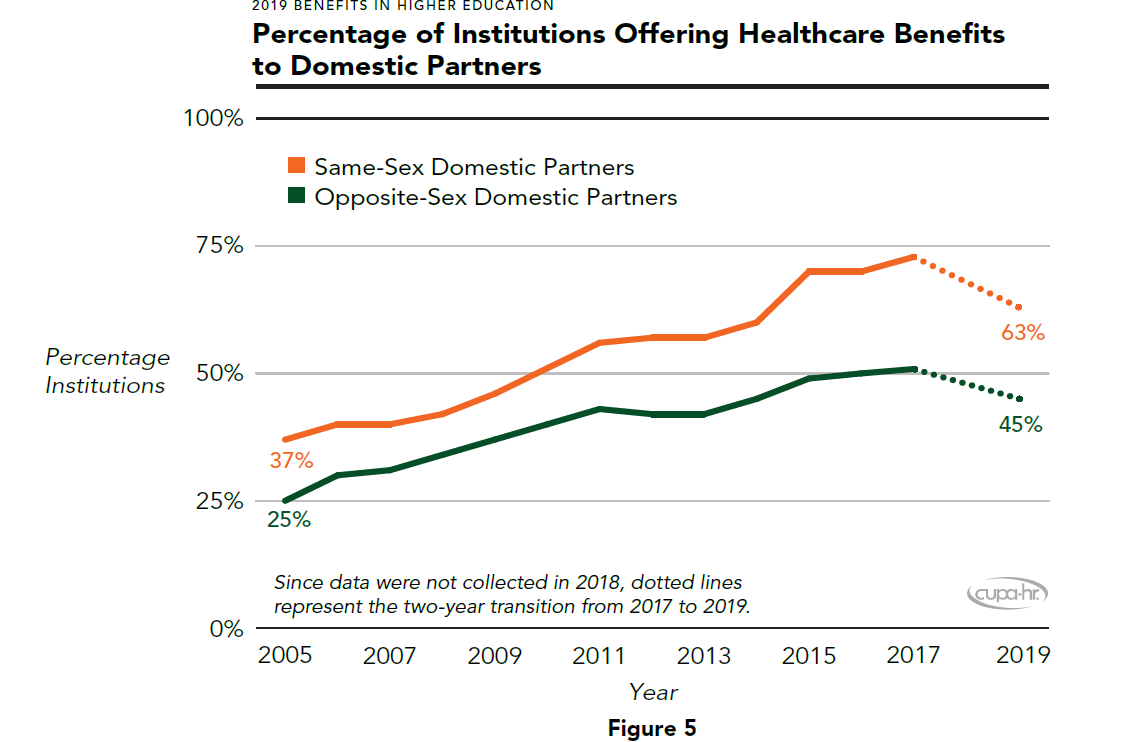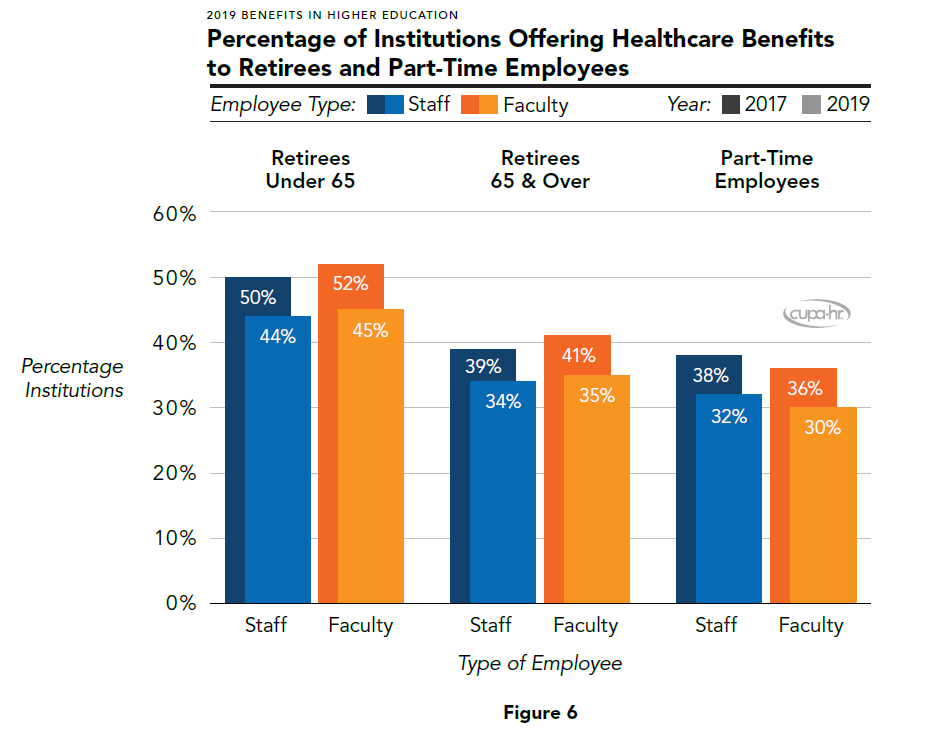Survey finds colleges narrowing health benefits for domestic partners and retirees
Author: Doug Lederman
Go to Source
As states across the country have responded to a 2015 Supreme Court decision by passing laws to allow same-sex marriage, colleges and universities have increasingly reined in their health-care benefits for domestic partners, be they of the same or different sexes.
That is among the findings of a biennial survey by the College and University Professional Association for Human Resources on the health-care benefits offered to campus employees. CUPA-HR releases the health care benefits survey in odd-numbered years and a survey of other, non-health-care benefits in even-numbered years.
As seen in the chart below, “this year’s survey marks the first time since 2005 that there has been a decrease in health care benefit offerings — both for same-sex (10-percentage-point decrease since 2017) and opposite-sex (six-percentage-point decrease since 2017) partners,” the survey’s authors wrote.
Nearly two-thirds (63 percent) of the 365 institutions surveyed still offered health-care benefits to same-sex domestic partners, while the comparable figure for opposite-sex partners was 45 percent. The gap between the two groups shrank to 18 percent from 22 percent in 2017.

The 2019 survey also showed a continuing decline in the number of colleges and universities offering health benefits to retirees and to part-time employees. A minority of colleges now offer such benefits to retirees under the age of 65, while barely a third provide health-care benefits to retirees 65 or older. And even fewer offer them to part-time employees (32 percent to part-time staff members, and 30 percent to part-time faculty members).
Among other findings in the survey:
- The proportion of institutions currently offering wellness programs stayed flat (60 percent versus 59 percent in 2017), while the percentage planning to create such a program dropped to 25 percent from 29 percent in 2017. More notably, fewer institutions than in 2017 said they dedicated funds (55 percent, down from 60 percent) or staffs (28 versus 35 percent) for wellness programs, and the median budget amounts fell to $27,500 from $35,000 in 2017.
- There was little to no change in the percentages of institutions offering preferred provider organization plans (the most popular type), about 85 percent of institutions, followed by about three in five institutions offering high-deductible health plans.
- The vast majority of surveyed colleges and universities offered dental plans, while about three-quarters offered vision and fewer than a third offered long-term care insurance.

